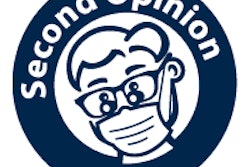
The introduction of midlevel dental practitioners -- also known as dental therapists -- in the U.S. has begun: first in Alaska with the implementation of the dental health aide therapist for Native Alaskans, and then in Minnesota, where the first class of oral health practitioners graduated in 2011 and is now being deployed in facilities serving underserved populations.
In addition, under consideration in some states, and already adopted in Minnesota, is the advanced dental hygienist practitioner (ADHP) advocated by the American Dental Hygienists' Association (ADHA). However, while the ADHA deserves much credit for stimulating interest in dental therapists, the ADHP model is not the best solution to the dental workforce shortage because of the extended length of training.
 Jay W. Friedman, DDS, MPH
Jay W. Friedman, DDS, MPHTo enter the ADHP's two-year master's degree program, one must first have a four-year baccalaureate degree in dental hygiene. This extends the ADHP program to six academic years, compared to the proven success of training a dental therapist with a high school diploma in only two years. Furthermore, the associate-degree dental hygienists, who far outnumber baccalaureate hygienists, would be denied advancement for which they are well qualified should this model prevail.
A zero-sum game
Dental hygienists becoming dental therapists is like a zero-sum game. From the viewpoint of alleviating the dental workforce shortage, it is a wash. What is gained in dental therapy is lost in periodontal therapy. The periodontal needs of the adult population are great and much under-supplied. We need dental hygienists and dental therapists. Nonetheless, dental hygienists should have the same right to advance their skills as general practitioners who become specialists. But it was demonstrated long ago that they can acquire the competencies of dental therapists with no more than a year of additional training ("The Forsyth Experiment: An Alternative System For Dental Care," Lobene, R, Cambridge, Massachusetts: Harvard University Press, 1979).
There are nearly 300 dental hygiene programs in the U.S., most of which offer two-year RDH certification. Many could expand to include a two-year dental therapist curriculum (Journal of Public Health Dentistry, Spring 2011, Vol. 71:2, pp. S9-S19). The dental therapist students and the dental hygienist students could share the same basic science courses during the first year, even as they "track" into their separate disciplines in the second year. Existing dental hygienists could be allowed credit for the first year of training, enrolling in the second year to become certified dental therapists.
In the most extensive and successful programs, such as in New Zealand, Australia, and Malaysia, dental therapists have been dedicated to children's care in school-based programs. More recently, some countries, including New Zealand, Australia, and The Netherlands, are combining both disciplines in a three-year training program for oral health therapists who will practice collaboratively with a dentist, but not necessarily under direct supervision (Journal of the California Dental Association, January 2011, Vol. 39:1, pp. 23-29).
The prerequisite is not a dental hygiene degree but graduation from high school. They will provide basic preventive, restorative, and periodontal therapies, including sealants, fillings, simple extractions, scaling, and root planing.
In the U.S., these hybrid therapists will most likely be deployed in community health centers and public health facilities in rural and inner-city dentist-shortage areas, serving both children and adults within the restricted scope of their dual competencies.
Effective, efficient, safe
That there is a need to enlarge the dental workforce if our population is to receive adequate oral healthcare is inarguable. That dental therapists can provide effective, efficient, and safe care to children has been thoroughly documented. With proper training and supervision they should also be able to provide basic care to adults, allowing dentists to practice at a higher and more fulfilling level.
For dentists to oppose dental therapists is to deny themselves the opportunity for self-advancement and the poor and underserved population of essential oral health care.
Jay Friedman, DDS, MPH, has published more than 60 papers in professional journals and is author of An Intelligent Consumer's Complete Guide to Dental Health. He has more than 60 years of experience as a clinician, university researcher, consultant, dental insurance administrator, and director of large group dental practices.



















